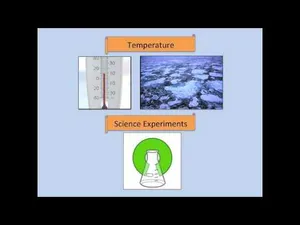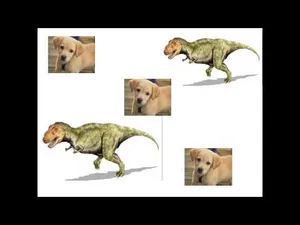Probabilities of Compound Events
Probabilities of compound events
Word Problems with Inequalities
Solving inequalities
Represent Proportional Relationships
Find, Show Proportional Amounts
Intro to Probability of a Chance Event
Probability of a chance event
Intro to Multi-Step Problems
Multi-step, real-world problems
Dividing Rational Numbers
Division of rational numbers
Measures Of Central Tendency
Measures of central tendency
Intro to Subtracting Rational Numbers
Subtract rational numbers
Intro to Predicting and Comparing Probability
Predict and compare probability
Combining Like Terms
Generate Equivalent Expressions
Intro to Multiplying Rational Numbers
Multiply rational numbers
Intro to Prime and Composite Numbers
Prime and Composite Numbers
Represent Proportions with Equations and Graphs
Represent Proportions
Multi-Step Word Problems
Four Operations with Numbers
Adding Opposite Quantities
Add rational numbers
Converting Rational Numbers to Decimals
Convert numbers to decimals
Computing Unit Rates
Compute unit rates
Ratio & Percent Word Problems
Ratio, Proportion Word Problems
Random Sampling
Inferential statistics
Math Activities and Teaching Resources for 7th Grade
7th graders, or as we like to call them, pre-high schoolers, are getting serious about their scholarly development. Multiplying like crazy, dividing and conquering different types of numbers, and solving equations like Sherlock Holmes on a case. These students will leave with a strong foundation in algebra, geometry, and trigonometry.
Enjoy this sampling of instructional videos, games, and activities for your 7th grade classroom!
Some of the skills students will master in eSpark include:
Ratios and Proportional Relationships
- Compute unit rates associated with ratios of fractions, including ratios of lengths, areas and other quantities measured in like or different units.
- Recognize and represent proportional relationships between quantities.
- Use proportional relationships to solve multistep ratio and percent problems.
The Number System
- Apply and extend previous understandings of addition and subtraction to add and subtract rational numbers; represent addition and subtraction on a horizontal or vertical number line diagram.
- Apply and extend previous understandings of multiplication and division and of fractions to multiply and divide rational numbers.
- Solve real-world and mathematical problems involving the four operations with rational numbers.
Expressions and Equations
- Apply properties of operations as strategies to add, subtract, factor, and expand linear expressions with rational coefficients.
- Understand that rewriting an expression in different forms in a problem context can shed light on the problem and how the quantities in it are related.
- Solve multi-step real-life and mathematical problems posed with positive and negative rational numbers in any form (whole numbers, fractions, and decimals), using tools strategically. Apply properties of operations to calculate with numbers in any form; convert between forms as appropriate; and assess the reasonableness of answers using mental computation and estimation strategies.
- Use variables to represent quantities in a real-world or mathematical problem, and construct simple equations and inequalities to solve problems by reasoning about the quantities.
Statistics and Probability
- Understand that statistics can be used to gain information about a population by examining a sample of the population; generalizations about a population from a sample are valid only if the sample is representative of that population. Understand that random sampling tends to produce representative samples and support valid inferences.
- Use data from a random sample to draw inferences about a population with an unknown characteristic of interest. Generate multiple samples (or simulated samples) of the same size to gauge the variation in estimates or predictions.
- Use measures of center and measures of variability for numerical data from random samples to draw informal comparative inferences about two populations.
- Understand that the probability of a chance event is a number between 0 and 1 that expresses the likelihood of the event occurring. Larger numbers indicate greater likelihood. A probability near 0 indicates an unlikely event, a probability around 1/2 indicates an event that is neither unlikely nor likely, and a probability near 1 indicates a likely event.
- Approximate the probability of a chance event by collecting data on the chance process that produces it and observing its long-run relative frequency, and predict the approximate relative frequency given the probability.
- Develop a probability model and use it to find probabilities of events. Compare probabilities from a model to observed frequencies; if the agreement is not good, explain possible sources of the discrepancy.
- Find probabilities of compound events using organized lists, tables, tree diagrams, and simulation.
eSpark is truly unique in the world of online learning. Our holistic, student-centered approach blends the proven benefits of play-based learning with systematic, explicit, and direct instruction. It’s proof that learning can be fun, personalized, and effective, all at once!
eSpark meets the criteria for evidence-based interventions under ESSA guidelines, and has been proven in multiple studies to improve student performance in math and reading.
When you sign up for an eSpark account, your students experience these activities via adaptive, differentiated independent pathways and teacher-driven small group assignments. Teachers also have access to detailed usage and progress reports with valuable insights into standards mastery, student growth trends, and intervention opportunities.
With the addition of the game-changing Choice Texts for the 2023-2024 school year, eSpark has cemented its status as the most loved supplemental instruction option for students and teachers alike. Claim your free account today and see the difference for yourself!





















